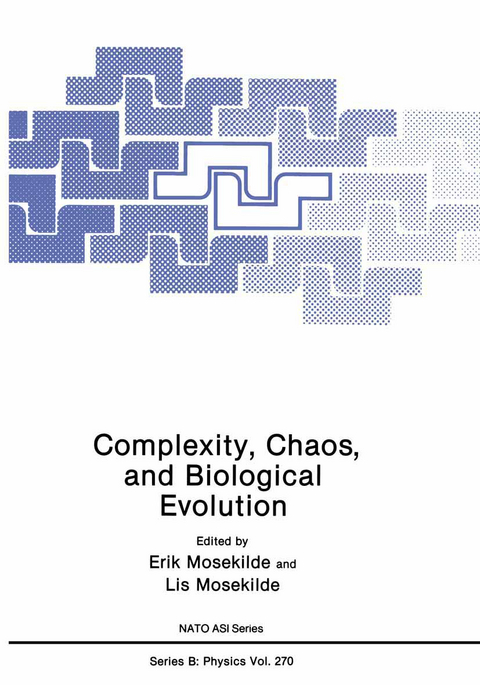
Complexity, Chaos, and Biological Evolution
Springer-Verlag New York Inc.
978-1-4684-7849-5 (ISBN)
Section I: An Introductory Overview.- Structure, Complexity and Chaos in Living Systems.- Probing Dynamics of the Cerebral Cortex.- Chaos and Bifurcations During Voiced Speech.- The Ultradian Clock: Timekeeping for Intracellular Dynamics.- Section II: Complex Dynamics in Physiological Control Systems.- Complex Dynamics in the Kidney Microcirculation.- Aspects of Oscillatory Insulin Secretion.- The Dynamic Code: Information Transfer in Hormonal Systems.- Structural Amplification in Chemical Networks.- Section III: Membrane Activity and Cell to Cell Signalling.- Periodicity and Chaos in cAMP, Hormonal and Ca2+ Signalling.- Fractal, Chaotic, and Self-Organizing Critical System: Descriptions of the Kinetics of Cell Membrane Ion Channels.- A Discontinuous Model for Membrane Activity.- Chaos in Coupled Nerve Cells.- Analysis of the Adenine Nucleotide Pool in an Oscillating Extract of Yeast Saccharomyces uvarum.- Boundary Operator and Distance Measure for the Cell Lineage of Caenorhabditis elegans and for the Pattern in Fusarium solani.- Section IV: Evolutionary Dynamics and Artificial Life.- Mutations and Selection in Evolutionary Processes.- Considerations of Stability in Models of Primitive Life: Effect of Errors and Error Propagation.- Information Dynamics of Self-Programmable Matter.- The Problem of Medium-Independence in Artificial Life.- An Optimality Approach to Ageing.- Modelling of Complex Systems by Simulated Annealing.- Section V: Biological Structures and Morphogenesis.- Generic Dynamics of Morphogenesis.- Models of Biological Pattern Formation and Their Application to the Early Development of Drosophila.- Reaction-Diffusion Prepatterns (Turing Structures): Supercomputer Simulation of Cytokinesis, Mitosis and Early Drosophila Morphogenesis.- Vortex Formation in Excitable Media.- Bone Remodeling.- Section VI: Chaos and Hyperchaos.- Childhood Infections — Examples of “Chaos in the Wild”.- Multifractal Analysis of Morphological Patterns in Normal and Malignant Human Tissues.- Method of Compatible Vectorfield in Studying Integrability of 3-Dimensional Dynamical Systems.- Discrete Steps Up the Dynamic Hierarchy.- Hyperchaotic Phenomena in Dynamic Decision Making.- Participants.
| Erscheint lt. Verlag | 26.11.2012 |
|---|---|
| Reihe/Serie | NATO Science Series: B ; 270 |
| Zusatzinfo | XI, 431 p. |
| Verlagsort | New York, NY |
| Sprache | englisch |
| Maße | 178 x 254 mm |
| Themenwelt | Naturwissenschaften ► Biologie ► Evolution |
| Naturwissenschaften ► Physik / Astronomie ► Angewandte Physik | |
| ISBN-10 | 1-4684-7849-4 / 1468478494 |
| ISBN-13 | 978-1-4684-7849-5 / 9781468478495 |
| Zustand | Neuware |
| Haben Sie eine Frage zum Produkt? |
aus dem Bereich


